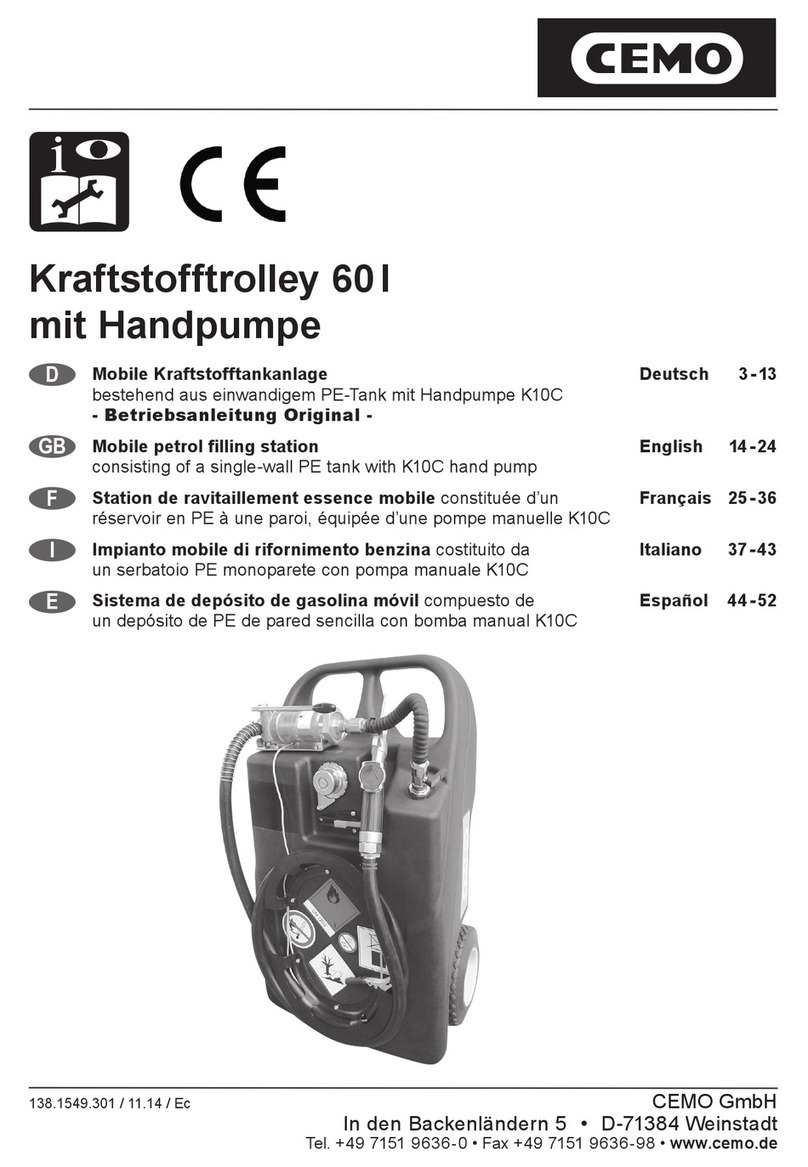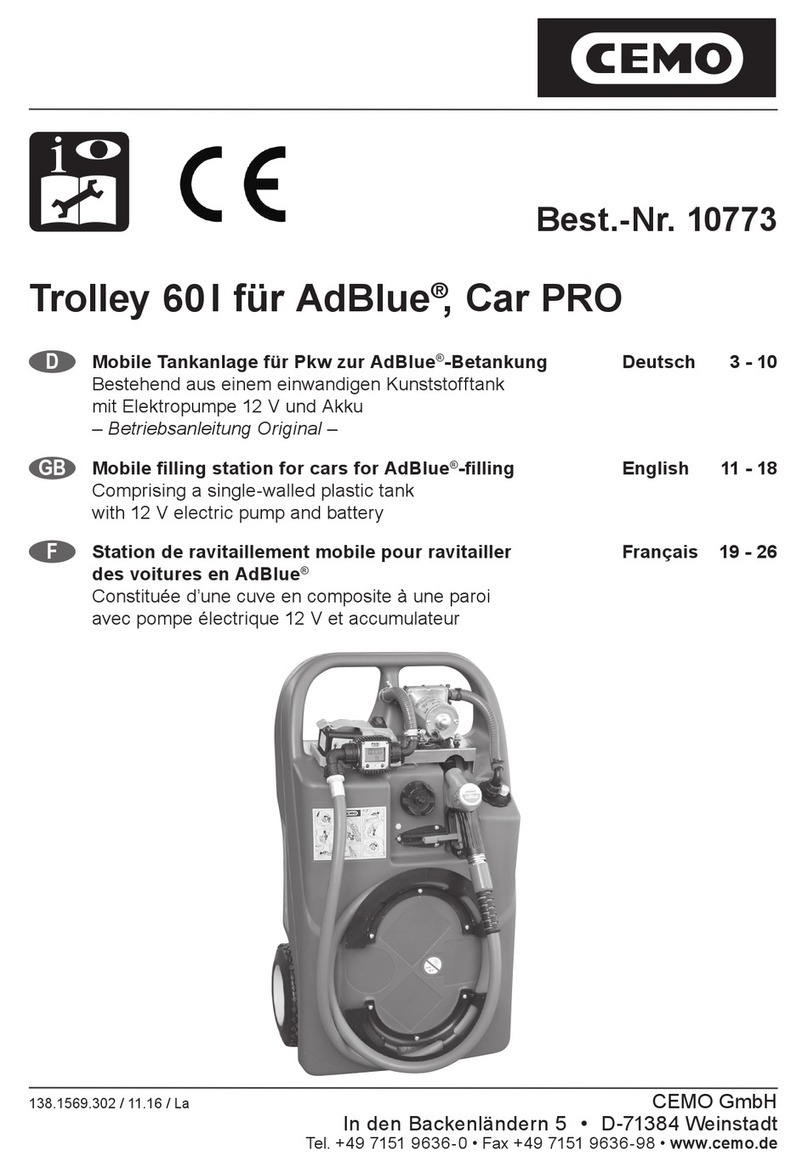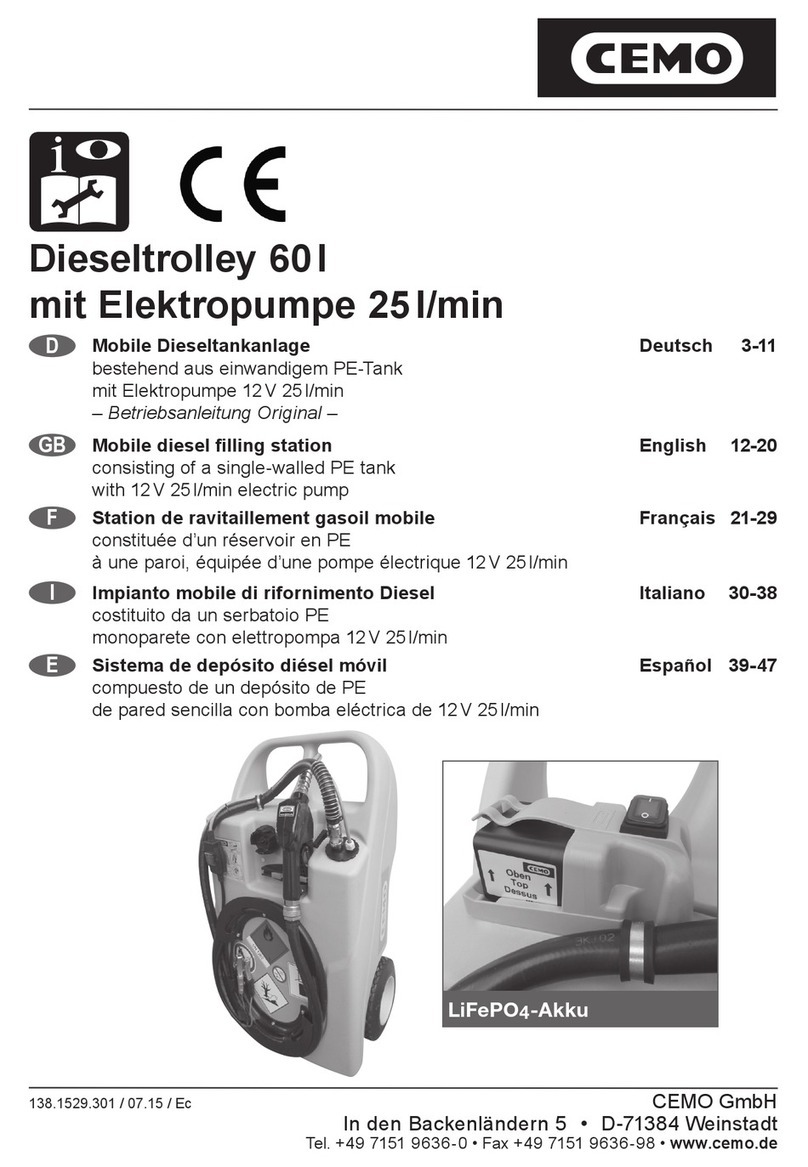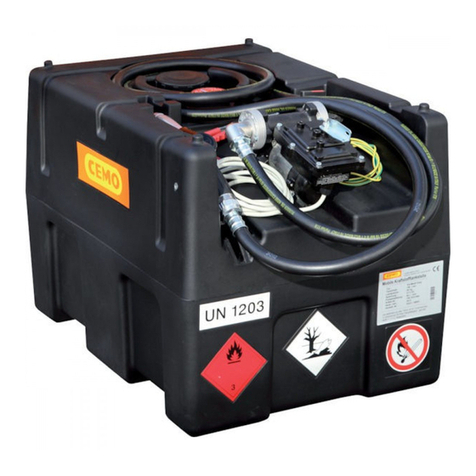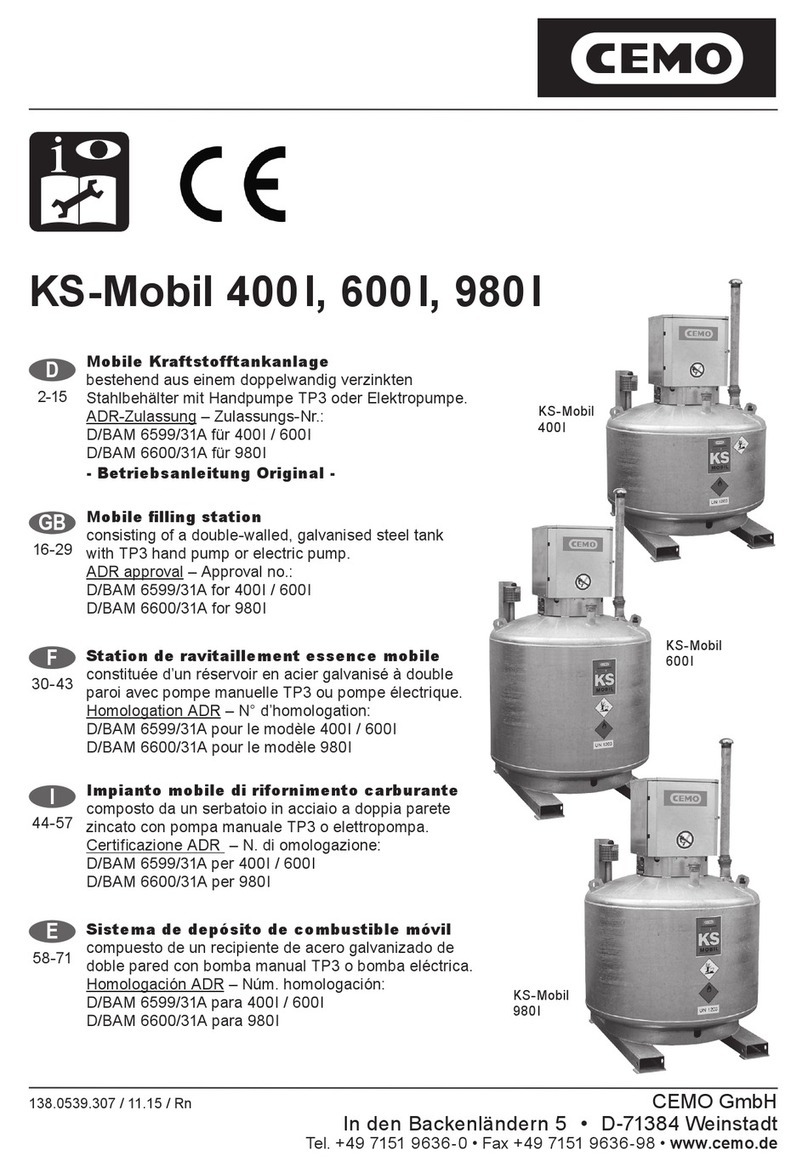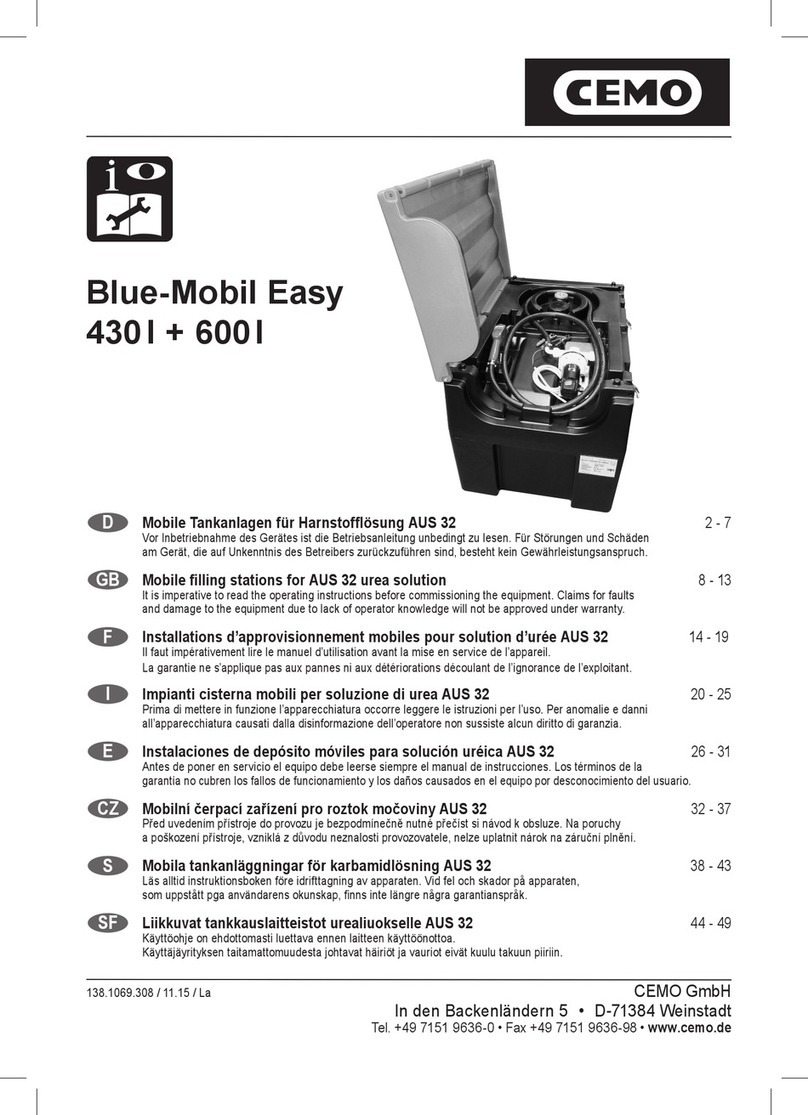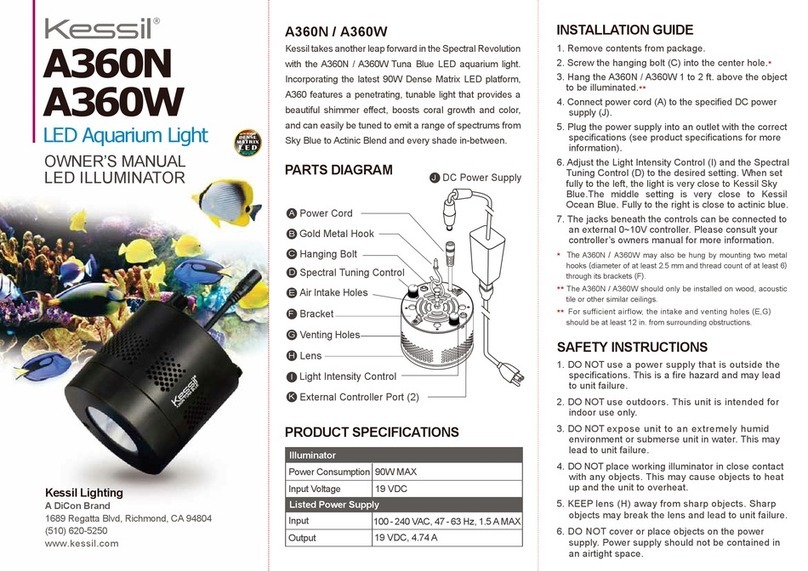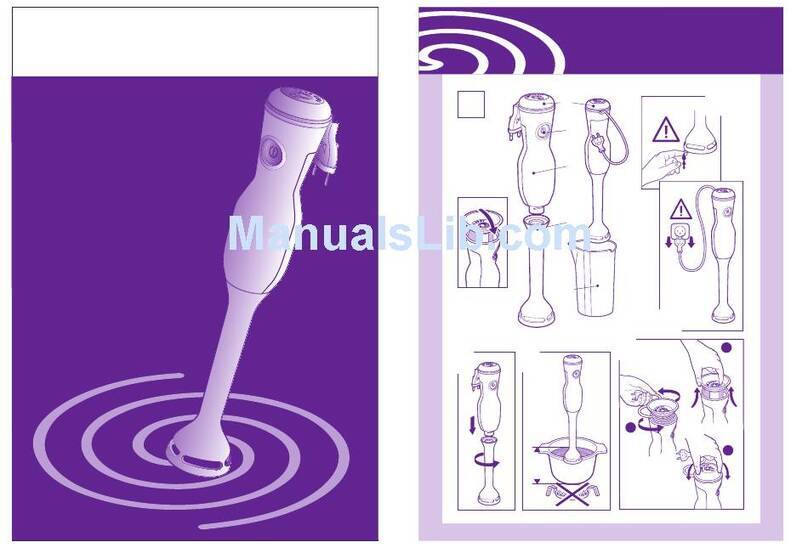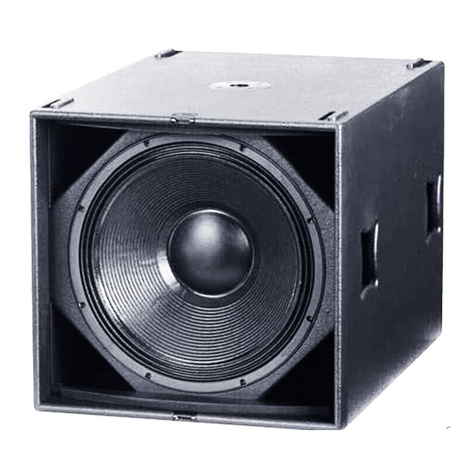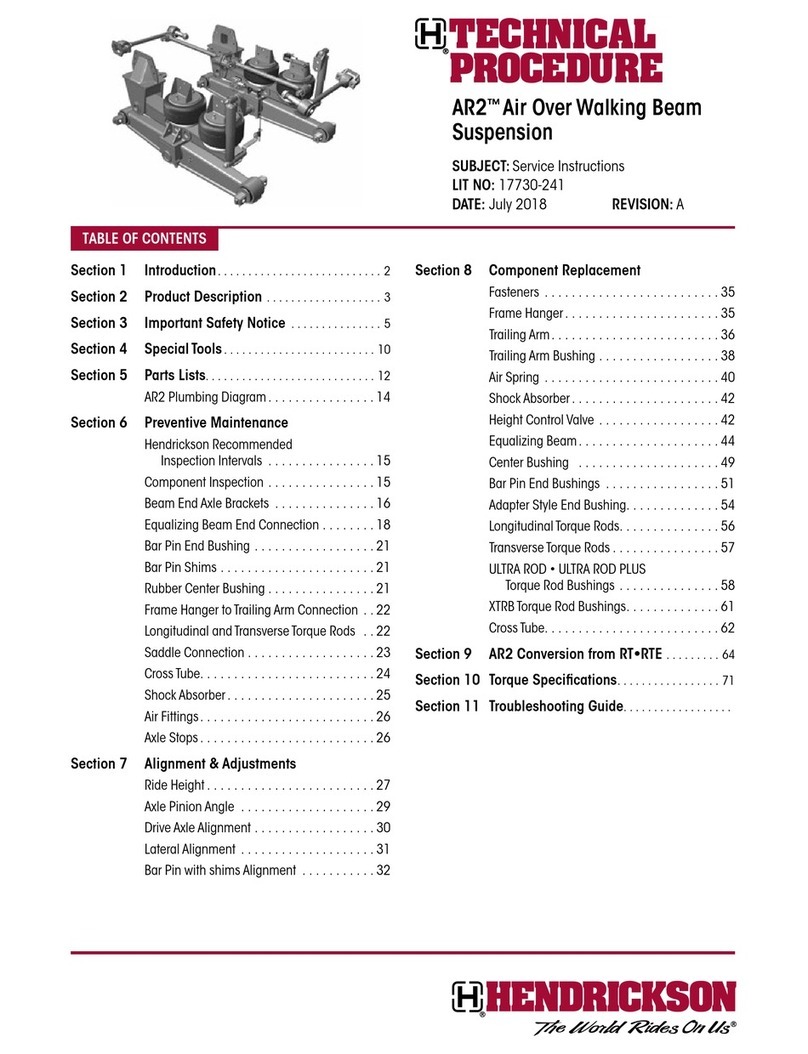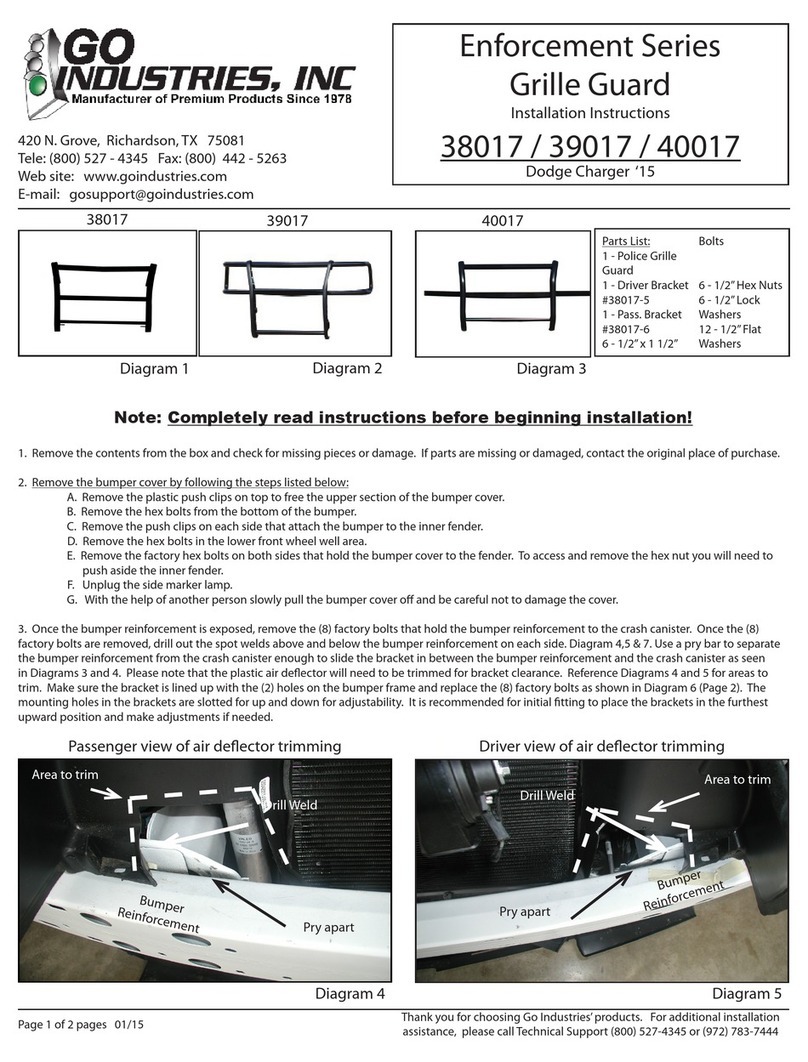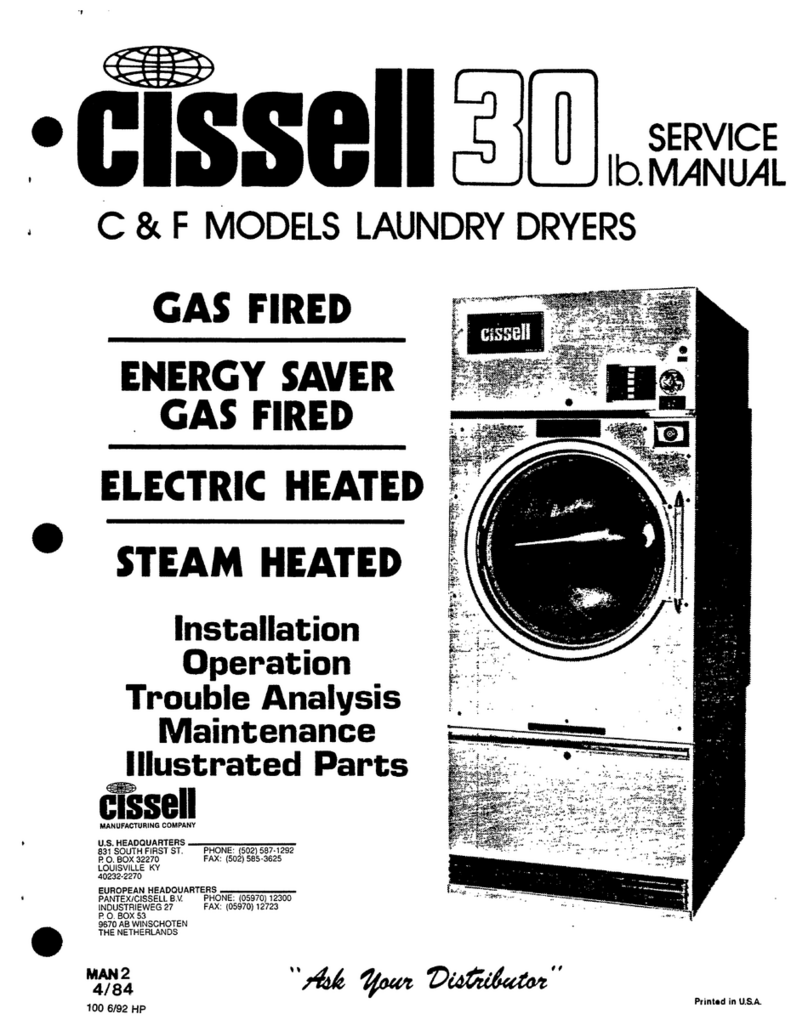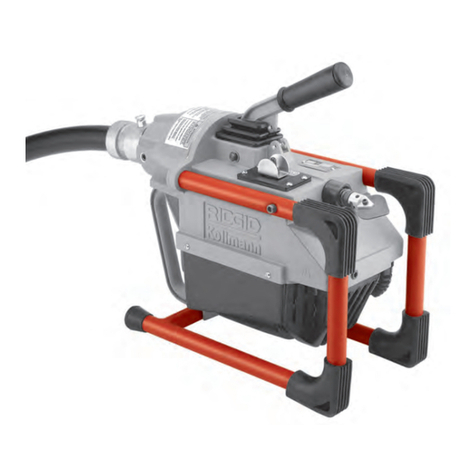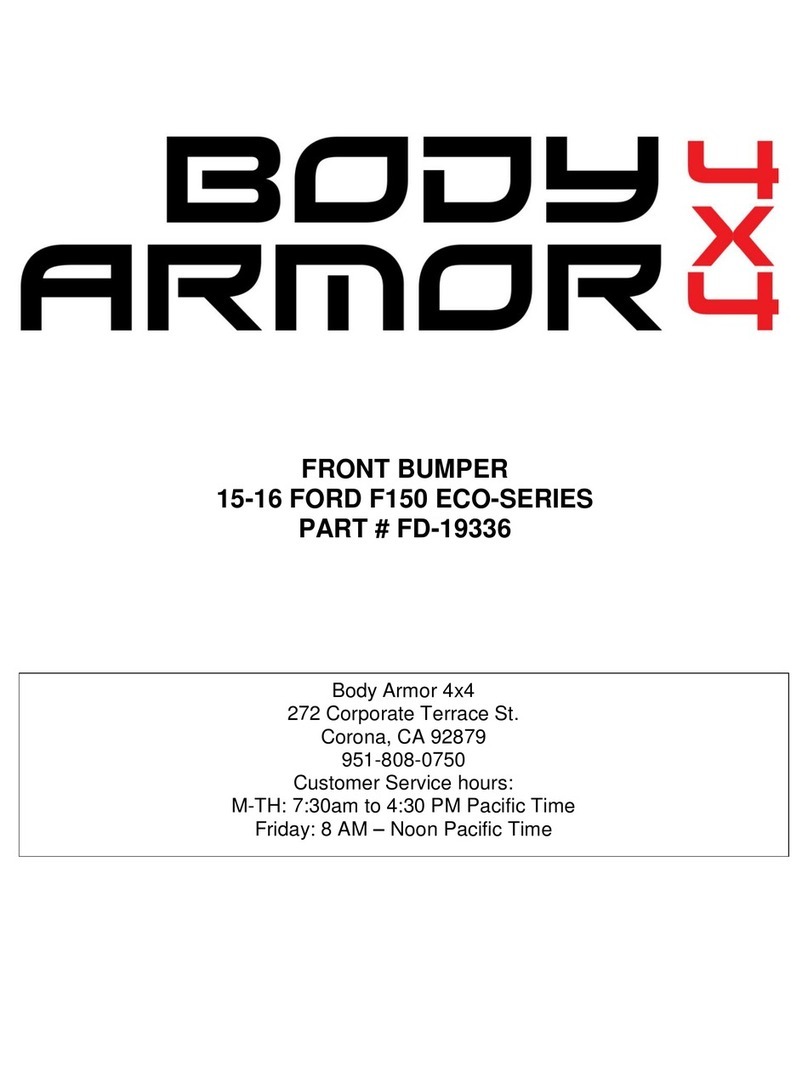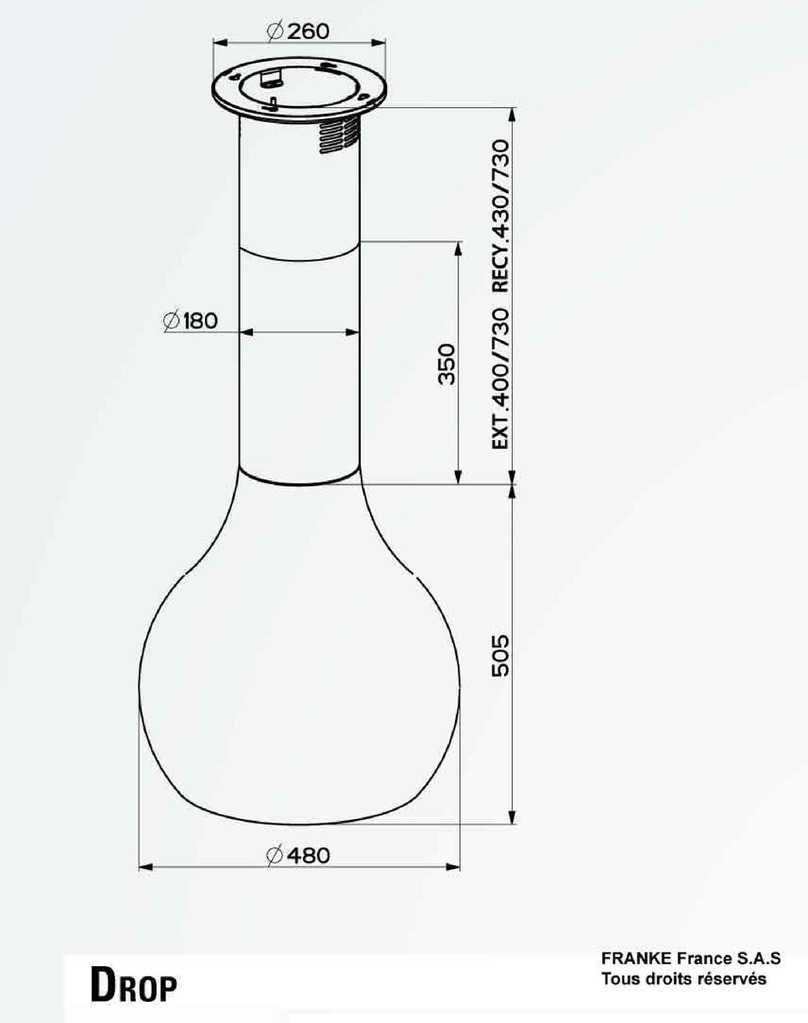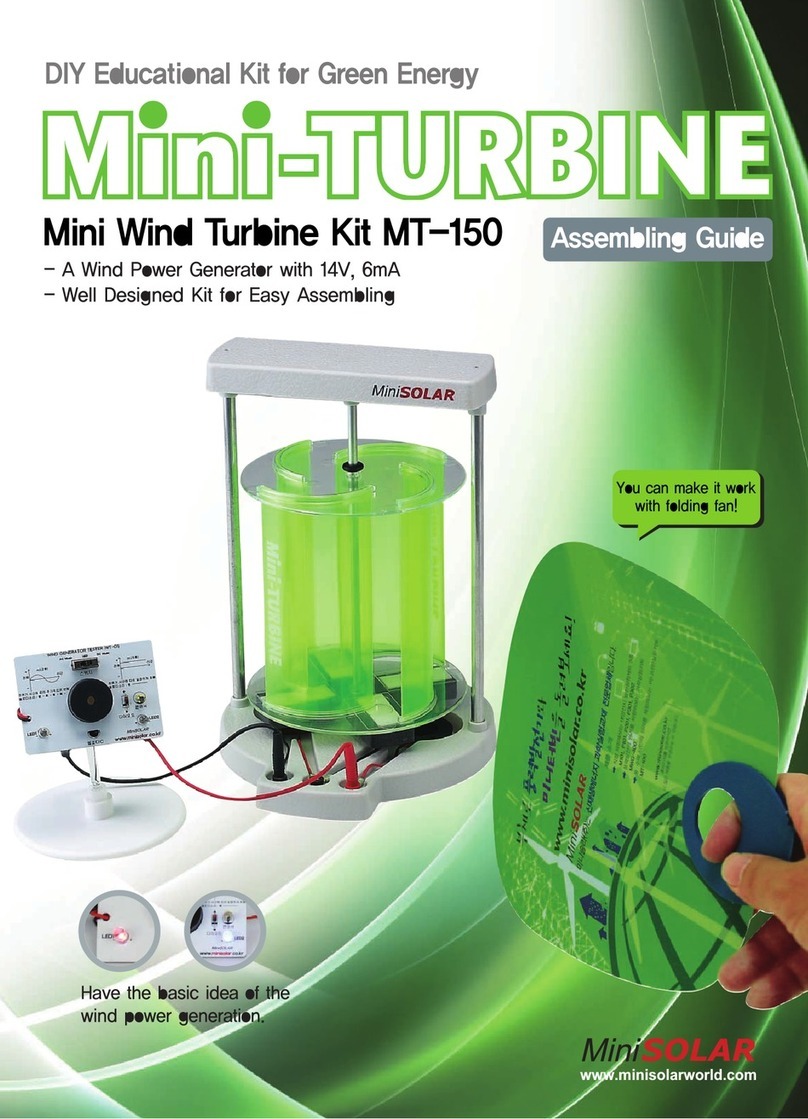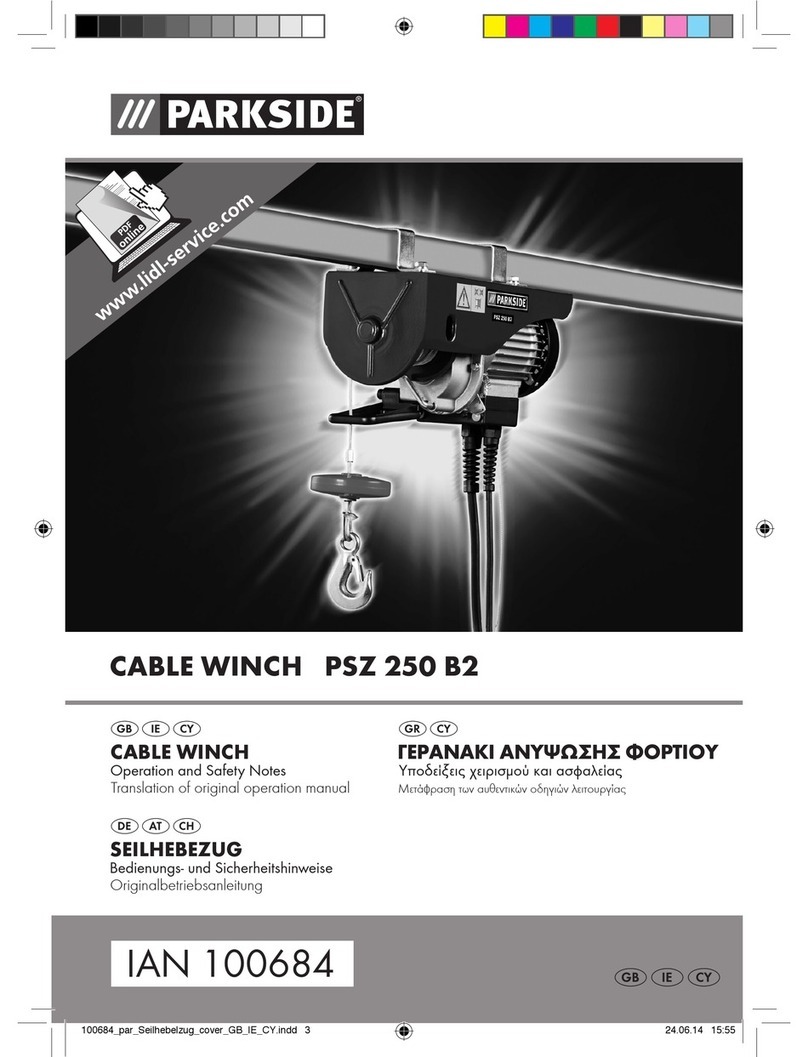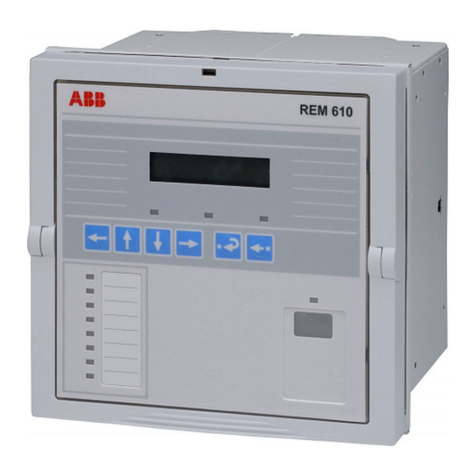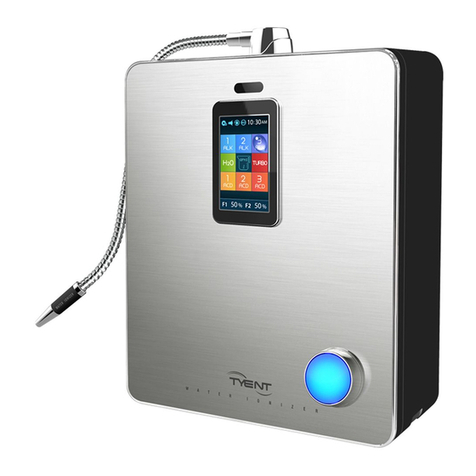
D
4
1.1.2Originalteileverwenden
Verwenden Sie bitte nur Originalteiledes
Herstellersoder von ihm empfohleneTeile.
Beachten Sie auchalleSicherheits- und
Anwendungshinweise,diediesenTeilen
beigegebensind.
Dies betrifft
• Ersatz-undVerschleißteile,
•Zubehörteile.
1.1.3BedienungderTankanlage
Um Gefahren durch falscheBedienungzu ver-
meiden,darf die Tankanlage nur von Personen
bedient werden,die
•dieBetriebsanleitunggelesenhaben,
• ihre Fähigkeiten zum Bedienen nachgewiesen
haben,
• mit der Benutzung beauftragt sind.
iWichtig!
DieBetriebsanleitungmuss fürjeden
Benutzer gut zugänglich sein.
1.1.4Warnhinweisean der Tankanlage
DieWarnschilder anderAnlagemüssenstets
angebrachtundlesbar sein.
VomHersteller angebrachteSchilder:
Verbot von Feuer und offenem
LichtundRauchen
Anbringung:
an Tank-Vorderseite
1.2Bestimmungsgemäße Verwendung
DiesemobileDieseltankstelle ist zulässig
gemäßADR1.1.3.1a) (Privatgebrauch, max.60l
Inhalt) und 1.1.3.1 c)(Handwerkerregelung).
DerSammel-, Transport- und Entnahmebehälter
istauch zum Aufstellenim Freiengeeignet
(Umgebungsbedingungen Kapitel 2.1 beach-
ten!).
Eine bestimmungsgemäße Verwendungbetrifft
z.B.(vorzugsweise)folgendeFlüssigkeiten:
-Dieselkraftstoff/Heizöl
-Biodiesel
1.2.1Dieseltrolleynach ADR1.1.3.1c)
GemäßADR1.1.3.1c) (in Deutschland sog.
„Handwerkerregelung“)dürfenauch mit
Behältern ohneADR-ZulassungGefahrgut-
transporte durchgeführtwerden.
FürBehälternach ADR1.1.3.1c) gilt:
• Transportnur für direkten Verbrauch mit
Eigenbetankung (d.h., Anfahrennur einer
Betankungsstelle und Durchführungder
Betankung nicht durch Dritte),
•keine Bezettelung (Aufkleber)erforderlich,
•keine Ausrüstungspflicht mit Feuerlöschgerät,
•kein Begleitpapier erforderlich,
• zulässigerBehälterinhalt:max. 450l,es gilt
ebenfalls die sog.„1000-Punkte-Regel“
•keine Wiederholungsprüfungerforderlich,
•keine Lebensdauerbeschränkung.
1.2.2Zusammenfassung
Eine andere Verwendungistnichtbestimmungs-
gemäß!
AusSicherheitsgründen ist esauch nicht
gestattet,Umbautenan der Tankanlage vorzu-
nehmen (außer dem Anbau von Zubehör,das
spezielldurchdenHersteller bereitgestellt wird).
ZurbestimmungsgemäßenVerwendunggehört
auch das BeachtenallerHinweise indieser
Betriebsanleitung,
1.3Sachwidrige Verwendung
iWichtig!
Eine sachwidrige Verwendung ist dem-
zufolge auchdasNichtbeachtender
Hinweisedieser Betriebsanleitung.
D e s w e i t e r e n :
• Nichtbeachtungder RegelungenderADR,
einschließlich1.1.3.1 c), und jeweils gültiger
nationaler Bestimmungen
• LagerungundTransport von anderen als den
unterbestimmungsgemäßerVerwendung
genannten Flüssigkeiten, z.B.:Bioethanol,
Chemikalien,Öle(Schmier-, Hydraulik-,
Pflanzenöl)
